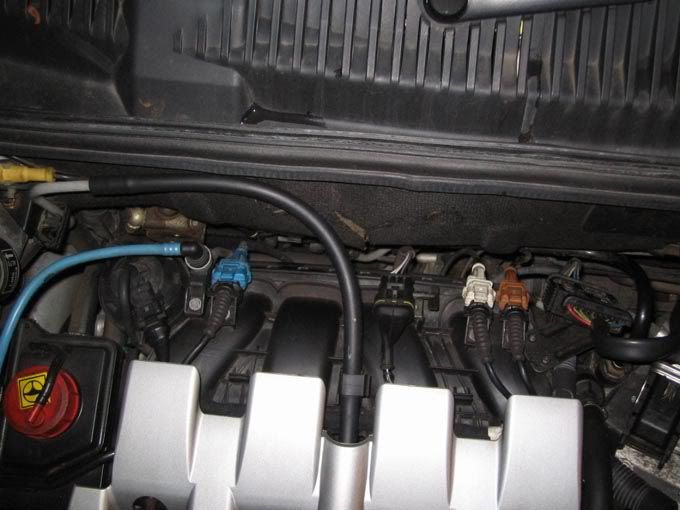
alfizta
-
Content Count
227 -
Donations
0.00 GBP -
Joined
-
Last visited
-
Days Won
2
Posts posted by alfizta
-
-
This one is nice. Credits: Gazza

and another one. Credits: Chris155

-
but I got to admit. is not understandable for such such an expensive part to be wrecked in just 60 000 miles... fortunately you can get some 2nd hand ones on ebay...
-
-
that requires some explanation from people with in depth knowledge

-
I guess that an Air Flow Meter does not have an integrated temp sensor as the the MAF has, right?
-
other very interesting test. this guy appears to have managed to check resistance between most of idle actuator pins, from 2 to 7, using ECU conectors A and B, with throtle closed and opened.
it's in russian, but is easily translated to english. you could do this check and make a comparison.
-
interesting link of a dismantled idle actuator. might be the potenciometer that gets worn over time...
-
will try to answer to your 2nd question.
according to this picture you should also have continuity between pins on the left column (idle actuator connector) and pins at the right column. M10B stands for plug B of the ECU. Smaky, correct me if I'm worng, please
 can't explain the missing pin numbers on the left too...
can't explain the missing pin numbers on the left too...
1st question, could be just residual resistance, but I'm not sure. at least you got continuity.
3rd question, it's a tough one. with used parts I would try before buy, but the new one is considerably more expensive than the used one... it's your choice... but don't precipitate yourself. as I said before, try to make as sure as possible that is that the part at fault...
anyway, if you can, drop us the make and part number of your lambda sensor. there are 3 different part numbers available for the 1.6 TS, but only one compatible with yours. there's a big chance you got the wrong one, although could not be your issue...
-
once I got mine off, but had to undo the 4 bolts securing the Throttle body first...
-
alfa part number confirmed 71713829 for bosch 0132008650
but make advised checkings before spending more money

good luck!
-
...and check the obvious, that is clean and well fastened

-
we can only confirm that with chassis number.
and for that price I would only buy original bosch.
do you confirm fuel consumption was better with lambda disconected?
picture here looks like the one you are looking and it's bosch!
http://www.shop4part...=1026&sku=33092
alfa part number 71713829 links to an idle control valve, but not 100% sure if it is the same part as the bosch part you mentioned.
-
yes, that's a possibility, the idle actuator. don't know which 6 clips he is talking about. mine is fixed with 3 torx t30 bolts next to the throttle body.
could you make a graph of lambda sensor signal and engine speed (rpm) simultaneously while you go to home/work? just to see if you can get a closed loop even it is just for a short period.
I have tested both my 146 and 156, and the discrepancy between desired air quantity and air quantity are similar to yours. Injection times were tested only on my 156, and are similar to yours too. Both my cars have lambda sensors working correctly.
-
what about the cable wraped in front left on the engine, 1st picture. that should go down to the ac compressor, through that small black plastic clip at the left of the engine, right/wrong?
-
that's what I confirmed after taking it all apart
 haven't got the chance to get to the coil... thank you!
haven't got the chance to get to the coil... thank you! -
just MAF. since you still have idle issues with lambda disconnected, probably lambda is still good (that's what I think Smaly is thinking...)
still I think we should try to find if you got the correct lambda. can give us the lambda make and part number and your alfa chassis number?
but before try cleaning your MAF. you could get lucky
 excellent guide here:
excellent guide here:http://www.alfa156.net/fr_index.html?/tech/MAFguide/
another thing, did you do the idle reset with 30 seconds time period or 90 seconds. I think MES directions are wrong on this. I always use the 90 seconds...
-
This is a repair guide for "version 1" (not for "version 2") of the VARIATOR SOLENOID (a.k.a. variator actuator or variator control valve) on CF2 and CF3 (plastic cover) Twin Spark engines.
- If you get a P1653 fault code, you better check your VARIATOR SOLENOID before anything else.
- This part is located under the engine cover, between injectors 1 and 2, fixed with 2 Torx T30 bolts to the engine.
- Unplug it first, and check resistance between the 2 terminals. You should get about 12 Ohms reading. If you don't get any reading, then you can attempt the following repair.
- It's completely safe to drive with a faulty VARIATOR SOLENOID, but will take you considerable extra horse power.
- More than the Twin Spark technology, this is where most of the extra italian horses come from. This is the engine component that engages the Phase Variator.
TOOLS NEEDED:
- T30 and T40 torx keys;
- Philips screw driver;
- Multimeter with leads;
- Soldering iron;
- Electronic soldering mass;
- Optional: silicone sealant or equivalent and a 12V above 1A output power source.
PROCEDURE:
1. Unscrew the 4 T40 bolts and remove engine cover.
2. Unscrew the 2 T30 bolts that are fixing the VARIATOR SOLENOID to the engine.
3. Check reading on terminals (pic 1). On this one you are getting none.
4. Unscrew the 2 philips screws on top and remove de cap.
5. Check resistance again between the two metal pins (pic 2). You should get a reading now around 12 Ohms.
6. Put cap back on place.
7. With a bit of soldering mass and a soldering iron, melt the two metal bits on top of the cap (pics 3 and 4). This will provide electric contact with the pins underneath.
8. Check resistance again on terminals. You should get a reading now (pic 5).
9. You can test it with a power supply. Plug it to the SOLENOID VARIATOR terminals. A tiny metal piece should quickly pop out, meaning that it is working (pic 6). You can also do this check using your Alfa Romeo battery if you don't have a 12V power supply.
10. Put all back together.
11. Enjoy the ride!
- I also got the chance to add some sealant to the gasket around the Valve (pic 7), as these are known for leaking engine oil and getting your engine top all dirty. Added to the top of the gasket, as it is where it appears to crack and the oil gets spilled out. This glue is becoming handy in a lot of repairs...
- There's another version of the VARIATOR SOLENOID, I call it "version 2" (pic 8), but it's unrepairable.
- On CF1 engines (metal cover) this repair is more difficult. The engine cover does not allow you to take off all the bolts that fix the VARIATOR SOLENOID, or it is too bloody difficult to fit a proper tool to remove them. I also own a CF1 engined 146, and I can confirm this. Read on the web that is needed to take off the rocker cover to remove the part in question.
- Beware that both versions of the VARIATOR SOLENOID fit on every Twin Spark engine, but the metal plates supporting it are not interchangeable (pic 9 – V1, pic 10 – V2). Most of the parts sold on ebay are incomplete and some of them are missing this metal plate. So, if you buy it on ebay, make sure you are buying your version or it comes with the metal plate included.
CREDITS:
- Old Smaky's posts on P1653 fault code;
- Anonymous ebay seller, who sold me a faulty and incomplete but repairable "version 1" of the VARIATOR SOLENOID;
- My dear fiancée, who shot one of the photos.
-
-
version "2" of the variator solenoid butchered, for all you alfa nerds to see. part no. 71736025
if you get a p1653 fault code with "high signal" on a twin spark and you got this version of the solenoid, then is probably faulty, and it's not repairable.
just couldn't dismantle the black cylinder, where actually the solenoid is.
version "1" repair guide coming soon...
-
Hi Smaky! Do you know an easy way to take the cap off the valve of the second picture? I'm atempting to repair it...
-
Smaky, have you looked to idle between 248 and 265 seconds (on picture)?
Norlig, Is your idle stable at 850 rpm? If not, it's better to plug the lambda back again...
Can you post a pic your intake system like you did on AO. Maybe Smaky could give his opinion on it

Also, I agree with you. I find it strange that "desired air quantity" is much lower than "air quantity". Also, don't understand those peaks of injection times and air quantity when rpm is almost constant (on video)... I'll try to check on mine when I have a chance.
-
So TRA, DTV and FRA not changing is normal. These numbers only change when you have the lambda sensor connected, until you get a closed loop signal, i.e, proper rate air/fuel.
-
is lambda sensor disconnected?
-
just looked at eLearn manual. it displays 2 possible lambdas for the 1.6 TS feb-2000 to jan-2001.
1) heater resistance 8,5 to 9,5 Ohm, probably bosch
2) heater resistance 3,5 to 4,5 Ohm, probably NTK
you could make sure you got the wrong one by checking both lambdas, old and new, resistances...
probably Smaky could explain us which versions are which...













Workshop Couldn't Figure It Out... Engine Beeing Jerky And Using Alot Of Fuel
in Engine Help
Posted · Report reply
as long Smaky is around, there is always a possibility of me being wrong , but I'm sure there's no problem. in fact, I had mine like this since I saw yours. first time I saw yours I thought you could have your MAF pugged the wrong way, but then I noticed that is just a matter of turning 180º the rubber protection of the MAF connector. it's more practical the way you have.
, but I'm sure there's no problem. in fact, I had mine like this since I saw yours. first time I saw yours I thought you could have your MAF pugged the wrong way, but then I noticed that is just a matter of turning 180º the rubber protection of the MAF connector. it's more practical the way you have.